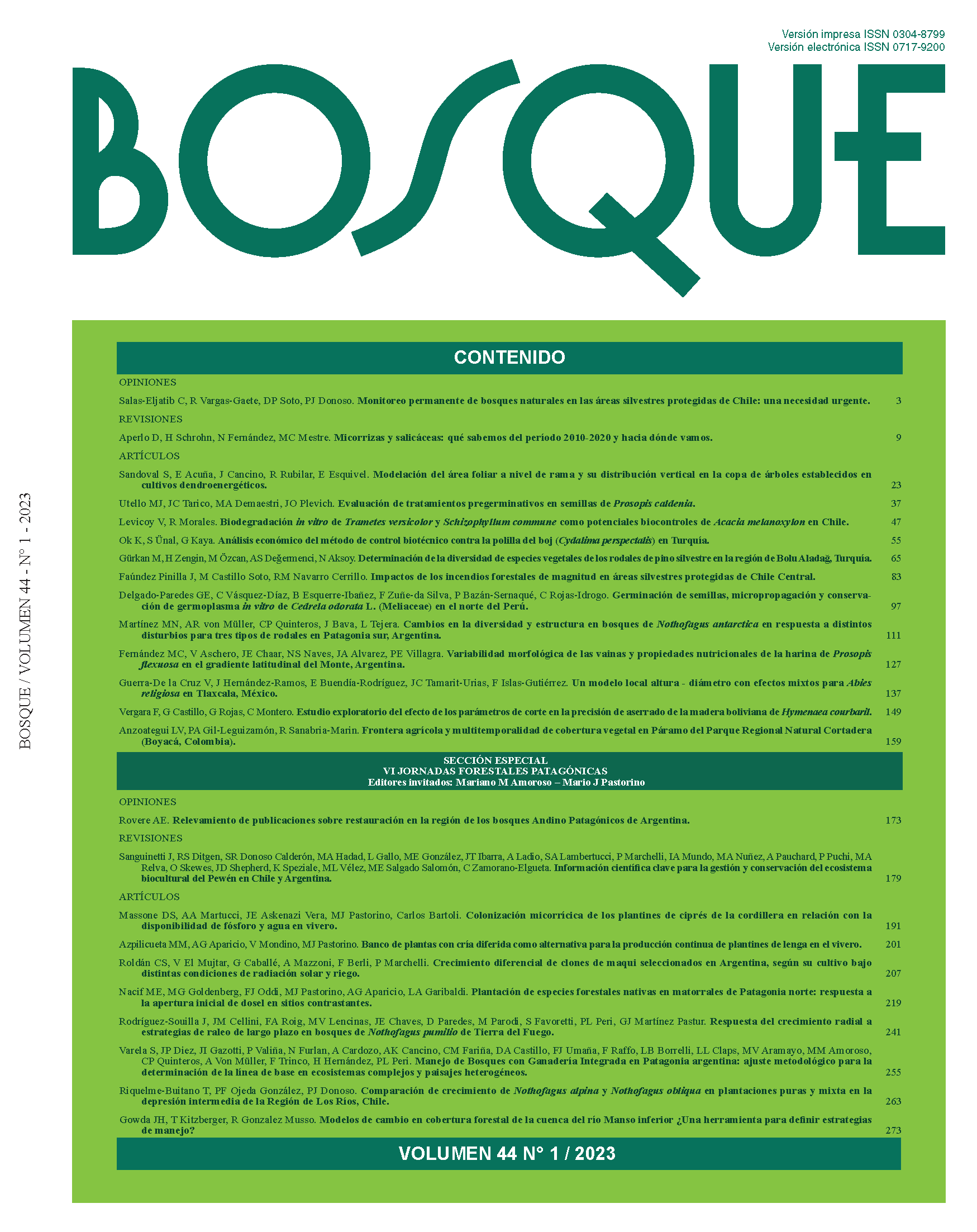Comparing growth of Nothofagus alpina and Nothofagus obliqua in pure and mixed plantations in the intermediate depression of the Los Ríos Region, Chile
Main Article Content
Abstract
In Chile, Nothofagus spp. is the main native tree genus grown in plantations. Data regarding growth in Nothofagus plantations have been reported for about three decades, and generally illustrate their high productive potential, especially if silvicultural management is carried out on time and established in appropriate places. The aim of this study was to measure the increases in diameter and height of N. obliqua and N. alpina in pure plantations and mixed plantations with both species, plus N. dombeyi and three mid-tolerant native species. These plantations are located close to each other, at 50 - 100 m a.s.l., each approximately 1 ha in size, both with southern exposure and the same soil type. They were between 24 - 26 years old when they were evaluated. In each plantation, dominant individuals were selected, and their neighboring competition (potentially available area, PAA), total height, and DBH were measured. An increment core was obtained from each individual to evaluate the increase in plantations over the last 6 years (PAI). The PAA of the species in each situation was not significantly different, as there was homogeneity in the competition conditions between individuals in the different plantations, which allowed for comparison of the increase between species according to condition. The total height, the DBH, and the PAI for each species were all significantly higher in the mixed plantation compared to the pure plantation, which is interpreted as a result of the combined effects of reducing competition and facilitation, in which the diversity of species plays a key role.

